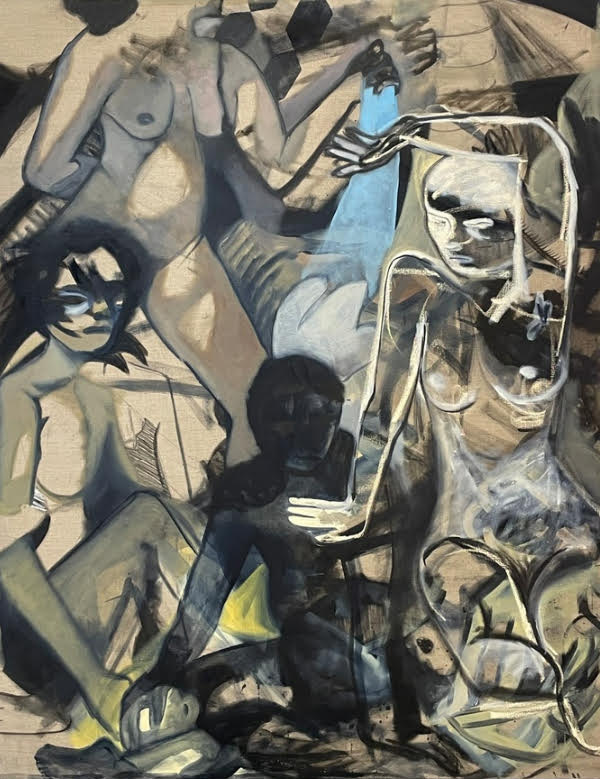
Sara Benninga is a contemporary painter focusing on the human figure and on narratives that question the ways women have been visually represented in art history. Her paintings address femininity, sexuality, experience, and psychological tension; they sometimes refer to gestures and subjects from art history.
Just as Picasso’s Guernica foreshadowed and denounced war in 1937, Sara Benninga uses art’s historical lens to address the horrors of war as well as a range of human experiences and emotions. Her work in current exhibitions at the Laurie M. Tisch Gallery in New York, curated by Dr. Ido Lahav Noy and at galleries in Tel Aviv and Jaffa, Israel, offers unusual images that present a new way of “reading” what is being addressed.
“Hamsa,” at the Laurie M. Tisch Gallery, is the Arabic word for five, and it is a healing/protective symbol in Jewish and Muslim faiths. Benninga’s five works seem decorative, but the artist is playing with viewers’ perceptions. She stated, “There’s not blood. That is the burning pink color that I use in other places as well. The fluorescent pink almost looks like blood. I traced my hand, so it plays between the symbol and the human; there’s something eerie that speaks to the whole question of humanity in this awful war. It’s like being in a box. No one is listening to you. The form in Hamsa is important, the traces of the human hand play with your head a little. It’s a strange balance of contradictions since it loses the element of a symbol; a help sign or a stop sign and a pushing away gesture converge in these hands.” The five works are titled Burning Pink, In the Clouds, Here, Festive Decoration, and Disappearing.
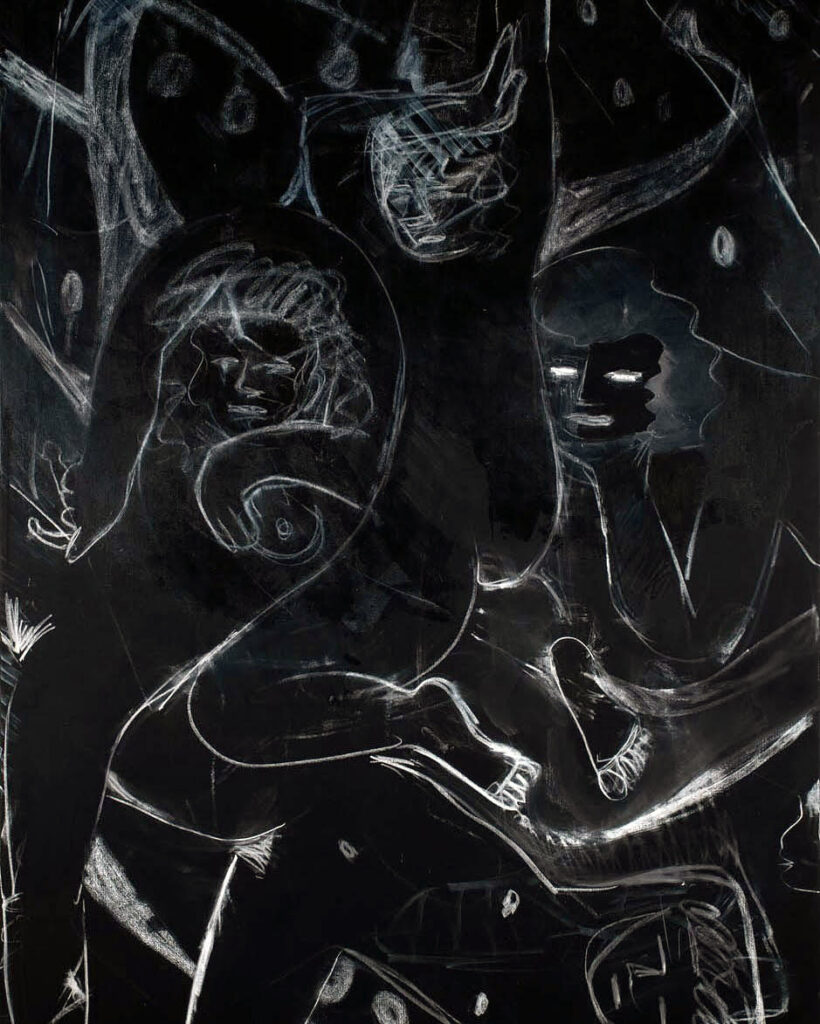
“Once Upon a Hand” at Hateiva, in Jaffa was curated by Hugit Unmani Rubinstein, who wrote, “Sara Benninga needs stretched and unstretched canvas, and as she puts it, ‘dirty ones’, to realize the painted struggles. Between the whole and the dismantled, a bourgeois wink is detected to the fragmented figure by Courbet, in L’Origine du Monde, (1886) …(Benninga’s) figures reduced to a single limb are hinted at behind trees and bushes, energetically organized in a chain of meaningless actions upon a fragmented surface. Very little is needed to tell the story, a gaze galloping across a concealment of nothingness. Wilderness and words simultaneously hiding and revealing, emerge and veil themselves for us to see through a keyhole, telling the mystery of painting. A painting that doesn’t need to give an answer but to catch the gaze, to trouble us and not to persuade us, a kind of trap for the satiation of paintings.” Rubinstein’s comments assume that viewers know Courbet’s Origin of the World painting was of a nude woman’s exposed vulva; he suggests, in contrast, that Benninga shows women’s gazes and also the challenges and difficulties women face.
Benninga is a painter’s painter. For “Clinic” at Litvak Contemporary in Tel Aviv, curated by Hadas Glazer, her larger-than-human-sized canvases engage and surround the viewer as she offers a mashup of Old Masters and invented techniques and gestures. She integrates images, therapy, and representation. She plays with scale, color, and form to confuse the narrative. Part of her process has been finding ways to use different media including oil, graphite, acrylic, and dry pastel on canvas to create depth in a different way.
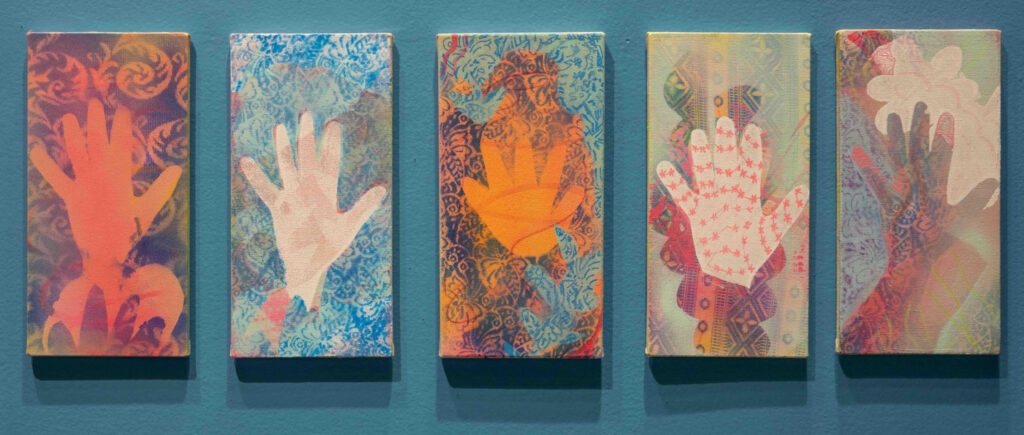
“The oil comes last,” the artist states. “The other media are water based. For Blue Stream the subject is what’s going on in the pleasure garden [refers to art in the 17th-19th centuries]. I’m mixing and smashing up the figure and the background.” Blue Stream has four figures, some are black and the other ones are the color of the linen but broken up between the real color of the linen and the oil in the color of the linen. It’s as though you’re looking through the figure, it’s taking apart the differentiation between the figure and the background. Night Time Gathering has four women; three are (facing) in one direction and one is horizontal going downwards. It punctures the way you look at the painting. It looks like white outlines—like I drew with chalk on a blackboard but it’s not. It’s a development that’s allowing me to say something new in painting.”
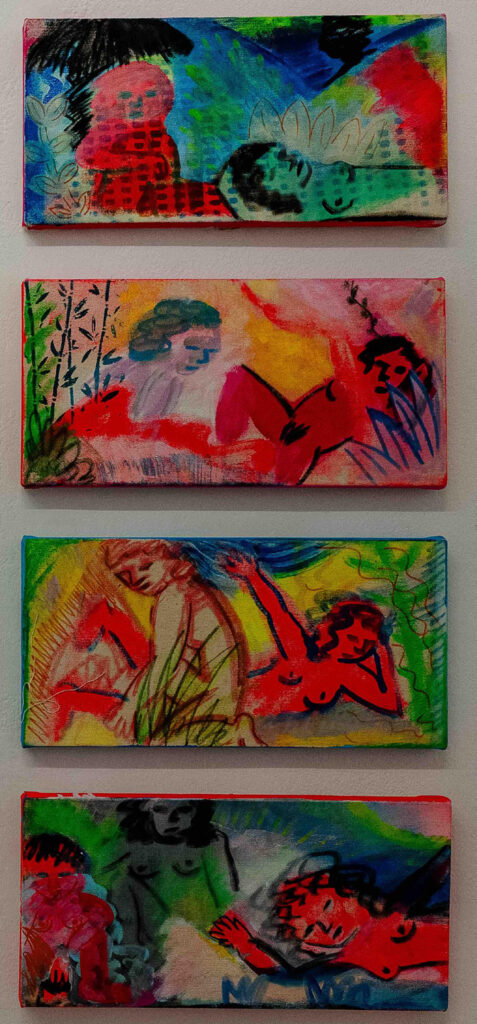
A group of small paintings shown at Aquabit Art in Berlin in May, 2024 depicts a female pleasure garden devoid of a judging gaze. The female figures swim, sit, rest and converse in a tranquil garden. “Using an experimental technique defying traditional notions of painting, I draw with dry pastels and paint with acrylic, and the different layers come through the translucency of the paint,” Benninga notes, adding, “Looking back on the subject in art history, pleasure gardens were always seen from a male point of view. In my paintings, and especially in this series, I challenge that notion. I make paintings for my eyes, first of all. I try to imagine a garden without judgment and what my painted figures would do there, not performing for external eyes. This is pleasure in my view. The figures pronounce their freedom.”
Dr. Sara Benninga was also recently featured on Pandora’s Box, an Israeli public radio program. She is in the Department of Visual and Material Culture at Bezalel Academy of Art and Design, Jerusalem and in the Department of Art History at Tel Aviv University. G&S
IG: sarabenninga_painting
sarabenninga.com

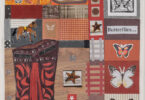
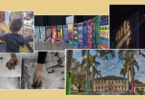
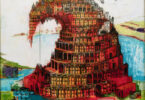
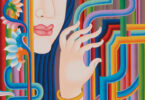
Leave a Comment